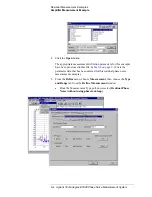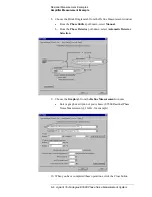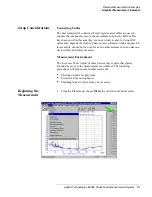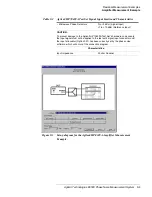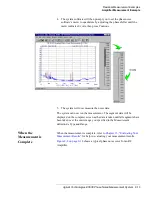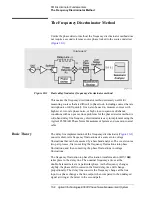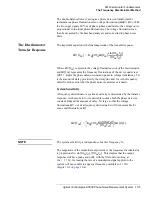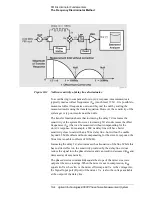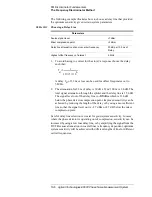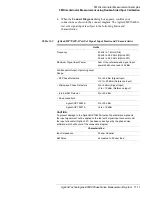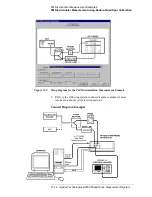
Agilent Technologies E5500 Phase Noise Measurement System
10-3
FM Discriminator Fundamentals
The Frequency Discriminator Method
The double-balanced mixer, acting as a phase detector, transforms the
instantaneous phase fluctuations into voltage fluctuations (
). With
the two input signals 90
°
out of phase (phase quadrature), the voltage out is
proportional to the input phase fluctuations. The voltage fluctuations can
then be measured by the baseband analyzer and converted to phase noise
units.
The Discriminator
Transfer Response
The important equation is the final magnitude of the transfer response.
Where
represents the voltage fluctuations out of the discriminator
and
represents the frequency fluctuations of the device under test
(DUT).
is the phase detector constant (phase to voltage translation).
is the amount of delay provided by the delay line and
is the frequency
offset from the carrier that the phase noise measurement is made.
System Sensitivity
A frequency discriminator’s system sensitivity is determined by the transfer
response. As shown below, it is desirable to make both the phase detector
constant
and the amount of delay
large so that the voltage
fluctuations
out of a frequency discriminator will be measurable for
even small fluctuations
.
NOTE
The system sensitivity is independent of carrier frequency
.
The magnitude of the sinusoidal output term or the frequency discriminator
is proportional to
. This implies that the output
response will have peaks and nulls, with the first null occurring at
. Increasing the rate of a modulation signal applied to the
system will cause nulls to appear at frequency multiples of
(
∆φ
∆
V
→
∆
V fm
(
)
K
φ
2
πτ
d
∆
f fm
(
)
π
fm
τ
d
(
)
sin
π
fm
τ
d
(
)
-----------------------------
=
∆
V fm
(
)
∆
f fm
(
)
K
φ
τ
d
fm
K
φ
τ
d
∆
V
∆
f
∆
V fm
(
)
K
φ
2
πτ
d
π
fm
τ
d
(
)
sin
π
fm
τ
d
(
)
-----------------------------
∆
f fm
(
)
(
)
=
fo
π
fm
τ
d
(
) π
fm
τ
d
(
)
⁄
sin
fm
1
τ
d
⁄
=
1
τ
d
⁄

